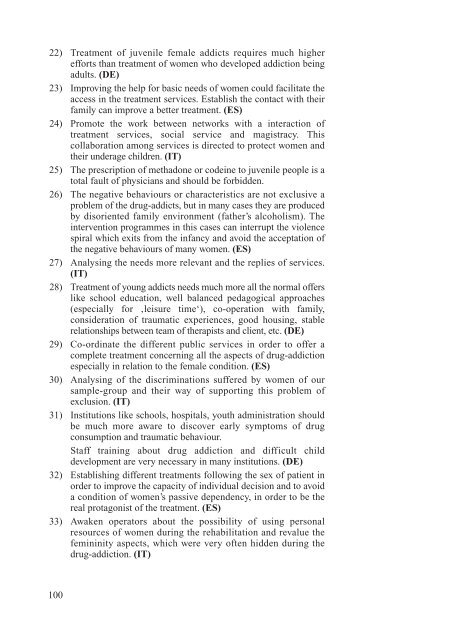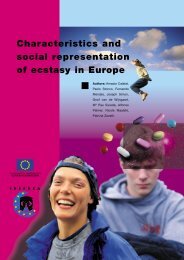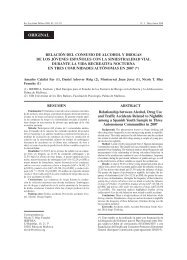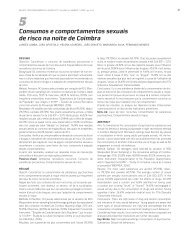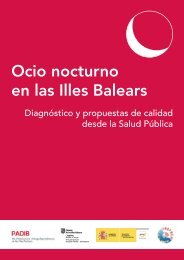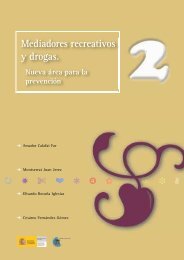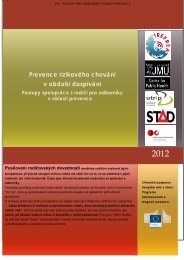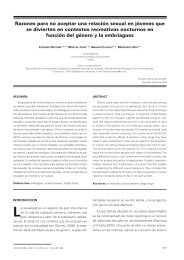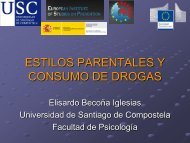Women drug abuse in Europe : Gender identity - Irefrea
Women drug abuse in Europe : Gender identity - Irefrea
Women drug abuse in Europe : Gender identity - Irefrea
You also want an ePaper? Increase the reach of your titles
YUMPU automatically turns print PDFs into web optimized ePapers that Google loves.
22) Treatment of juvenile female addicts requires much higherefforts than treatment of women who developed addiction be<strong>in</strong>gadults. (DE)23) Improv<strong>in</strong>g the help for basic needs of women could facilitate theaccess <strong>in</strong> the treatment services. Establish the contact with theirfamily can improve a better treatment. (ES)24) Promote the work between networks with a <strong>in</strong>teraction oftreatment services, social service and magistracy. Thiscollaboration among services is directed to protect women andtheir underage children. (IT)25) The prescription of methadone or code<strong>in</strong>e to juvenile people is atotal fault of physicians and should be forbidden.26) The negative behaviours or characteristics are not exclusive aproblem of the <strong>drug</strong>-addicts, but <strong>in</strong> many cases they are producedby disoriented family environment (father’s alcoholism). The<strong>in</strong>tervention programmes <strong>in</strong> this cases can <strong>in</strong>terrupt the violencespiral which exits from the <strong>in</strong>fancy and avoid the acceptation ofthe negative behaviours of many women. (ES)27) Analys<strong>in</strong>g the needs more relevant and the replies of services.(IT)28) Treatment of young addicts needs much more all the normal offerslike school education, well balanced pedagogical approaches(especially for ‚leisure time‘), co-operation with family,consideration of traumatic experiences, good hous<strong>in</strong>g, stablerelationships between team of therapists and client, etc. (DE)29) Co-ord<strong>in</strong>ate the different public services <strong>in</strong> order to offer acomplete treatment concern<strong>in</strong>g all the aspects of <strong>drug</strong>-addictionespecially <strong>in</strong> relation to the female condition. (ES)30) Analys<strong>in</strong>g of the discrim<strong>in</strong>ations suffered by women of oursample-group and their way of support<strong>in</strong>g this problem ofexclusion. (IT)31) Institutions like schools, hospitals, youth adm<strong>in</strong>istration shouldbe much more aware to discover early symptoms of <strong>drug</strong>consumption and traumatic behaviour.Staff tra<strong>in</strong><strong>in</strong>g about <strong>drug</strong> addiction and difficult childdevelopment are very necessary <strong>in</strong> many <strong>in</strong>stitutions. (DE)32) Establish<strong>in</strong>g different treatments follow<strong>in</strong>g the sex of patient <strong>in</strong>order to improve the capacity of <strong>in</strong>dividual decision and to avoida condition of women’s passive dependency, <strong>in</strong> order to be thereal protagonist of the treatment. (ES)33) Awaken operators about the possibility of us<strong>in</strong>g personalresources of women dur<strong>in</strong>g the rehabilitation and revalue thefem<strong>in</strong><strong>in</strong>ity aspects, which were very often hidden dur<strong>in</strong>g the<strong>drug</strong>-addiction. (IT)100


